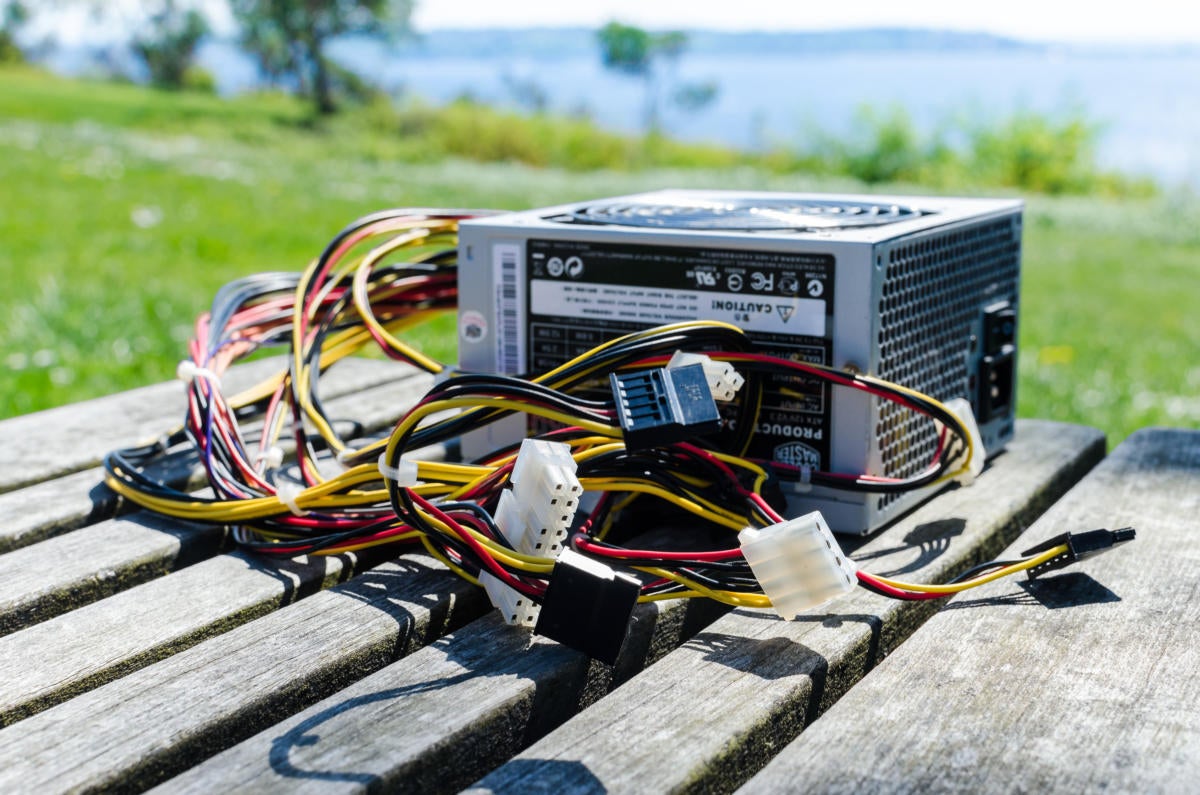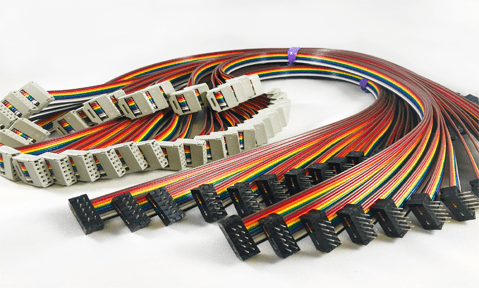The ATX power connector is a vital component in the realm of computer hardware that powers personal computers. This connector, which is the main link between the motherboard and the power supply unit (PSU), is essential to making sure that every component has the electricity it needs to operate properly. The design, characteristics, types, and importance of the ATX power connector in contemporary computing will all be covered in detail in this article.
1. An ATX Power Connector: What Is It?
An electrical connector known as the ATX power connector is common for connecting a computer’s power supply unit to the motherboard. This connector, which was first included in the ATX motherboard specification by Intel in 1995, has now evolved into the industry standard for powering desktop computers.
Important Purposes of the ATX Power Connector
The ATX power connector serves the following main purposes:
Power Supply: It supplies electricity to the motherboard and, via it, to all other components that are connected, including the CPU, RAM, and peripheral devices.
Signal Communication: The connector not only supplies power but also enables power management communication between the motherboard and the PSU, which includes turning the PSU on and off.
Voltage Regulation: By assisting in ensuring that different components receive the appropriate voltages, the connector promotes stable system operation and efficiency.
2. Specifications for ATX Power Connectors

Specific electrical and design requirements are followed by the ATX power connector to guarantee safety and compatibility with a variety of motherboards and power supplies. It is essential to comprehend these requirements in order to choose and utilize the appropriate components.
Connector Types (a)
The following types make up the majority of the ATX power connector:
The majority of contemporary motherboards use the 24-pin ATX connection as standard. There are two rows of twelve pins, totaling twenty-four pins. A range of voltages, including +3.3V, +5V, and +12V, are supplied by the 24-pin connector to various components.
20-Pin ATX Connector: Compatible with numerous older motherboards, the 20-pin connector is an older version of the ATX connector. It has 20 pins and can power a lot of components, but it does not have all the extra power lines that the 24-pin version has.
4-Pin CPU Connector: Often called the P4 connector, this 4-pin connector provides the CPU with extra power. Usually, it is located next to the primary ATX connector.
The 8-Pin CPU connector is a 4-pin connector that has been extended to provide higher power for CPUs with higher performance. Two 4-pin connectors are connected to form an 8-pin connector.
b. Rails with Voltage
Multiple voltage rails are available on the ATX power connector to support various components. Among the typical voltage outputs are:
+3.3V is the voltage used for various components, including RAM modules.
+5V: Often utilized for logic circuits and peripheral devices.
The CPU, graphics cards, and storage devices are powered by +12V.
c. Rating of Power
The PSU design affects the power rating of the ATX power connector. High-performance PSUs can have combined power ratings of more than 1,000 watts, while the majority of ordinary PSUs have a minimum of 500 watts. Selecting a PSU with enough wattage to satisfy all component requirements is crucial.
3. The Importance of the ATX Power Connector

In contemporary computer systems, the ATX power connector is essential. The components run smoothly and dependably because to its functionality and design. For the following reasons, this connector is crucial:
a. Harmony
Because of its standardized design, the ATX power connector works with a wide range of motherboards and power supplies. Because of this compatibility, creating and updating computers is made easier because users may change out components without worrying about connectivity problems.
b. Controlling Power
Advanced power management capabilities supported by the ATX power connector allow the motherboard and PSU to communicate. Through sleep mode, the PSU can lower power consumption when the system is not in use, thus improving energy economy. This communication makes this possible.
c. Security
Several safety precautions, including pin placement and locking mechanisms, are built into the ATX power connector architecture to guard against unintentional disconnections. Furthermore, protective circuits are frequently included in power supplies to prevent overcurrent, short circuits, and overheating.
d. Assistance with High-Performance Elements
The power requirements of components like CPUs and GPUs have increased dramatically as computer technology advances. By giving high-performance components enough power, the ATX power connector facilitates this expansion and enables users to construct robust workstations and gaming rigs.
4. Evolution of the ATX Power Connector
Since its launch in the middle of the 1990s, the ATX power connector has seen substantial change. Gaining knowledge about its development will help you better understand its current functionality and design.
a. Initial Growth
A 20-pin power connector was part of the original ATX standard, and that was plenty for the components available at the time. But as hardware technology developed, it became clear that more power was required.
b. The 24-Pin connector was introduced.
The 24-pin power connector was first introduced by the ATX 2.0 specification in order to meet the growing power needs of contemporary components. More voltage rails and better power distribution throughout the motherboard were made possible by this improvement.
c. Technological Progress in Power Supply
Manufacturers started adding extra connectors, including the 4-pin and 8-pin CPU power connectors, as power supply technology advanced to satisfy the needs of high-performance CPUs and graphics cards. Users can now construct stable, powerful systems with multiple components thanks to these developments.
d. Upcoming Events
Future developments in technology may see the ATX power connector changing as well. In order to meet the increasing power demands of emerging technologies like PCIe 5.0 and DDR5 memory, power connection design may need to be further developed.
5. Choosing the Right ATX Power Connector
Choosing the appropriate ATX power connector during computer construction or upgrade is essential for both compatibility and efficiency. These pointers will help you select the appropriate connector:
Evaluate the Power Needs of Your Components
Analyzing the power needs of your components is crucial before choosing an ATX connector and power supply. The CPU, GPU, RAM, and any extra peripherals are all included in this. To determine the total wattage required, see product specs or online calculators.
Verify Compatibility (b)
Verify the compatibility of the motherboard and power supply, paying special attention to the ATX connection type. Although the majority of contemporary motherboards support the 24-pin connector, it is a good idea to confirm.
c. Select a Reputable Power Source
Purchase of a high-quality power supply from a recognized manufacturer is necessary for the dependability and stability of the system. Search for PSUs that have received positive reviews, have excellent efficiency ratings (such 80 PLUS certification), and have enough watts to power your components.
d. Think About Non-Modular vs. Modular Designs
Modular, semi-modular, and non-modular designs are available for power supplies. By enabling customers to connect just the wires they require, modular power supply reduce cable clutter and enhance case airflow. When choose between these options, take ventilation and build aesthetics into consideration.
6. Common Issues with ATX Power Connectors
ATX power connectors can experience problems that could impair system performance even though they are reliable. Comprehending these typical issues can facilitate users in troubleshooting more efficiently.
a. Insecure Linkages
Loose connections are one of the most frequent problems with ATX power connectors. Intermittent power loss may result from unclean or unseated connectors over time. This problem can be avoided by routinely verifying and making sure secure connections are made.
a. Damage to Pins
Removing or installing cables incorrectly might cause damage to the pins on the ATX power connector. Poor electrical contact and problems with power delivery might result from bent or damaged pins. When installing connectors, users should use caution and refrain from using too much force.
b. Failure of the Power Supply
A failed power source may cause the system to go down entirely or behave strangely. Unusual noises coming from the power supply, random reboots, or failure to turn on are all signs of a deteriorating PSU. Usually, in these situations, the PSU needs to be replaced.
d. Putting too much on
Connecting an excessive number of high-power components to the power supply can overload it and cause overheating and possible failure. Make sure that the total power of all the components never goes above the rated capacity of the PSU.
7. Best Practices for ATX Power Connectors
Take into account the following recommended actions to guarantee the durability and functionality of ATX power connections and related parts:
a. Consistent Upkeep
Check for wear or damage on a regular basis on the connections between the motherboard and power supply. Maintaining optimal performance can be aided by cleaning the connectors and making sure the connections are secure.
a. Make Use of Good Cables
Select suitable, high-quality cables when updating or replacing existing ones. Low-quality cables may cause overheating, failure, and increased resistance.
Track the System’s Temperature
Monitoring system temperatures can assist in locating possible power delivery problems. Make sure the case has enough airflow, and if the temperature rises too high, think about installing more cooling solutions.
d. Pay attention







